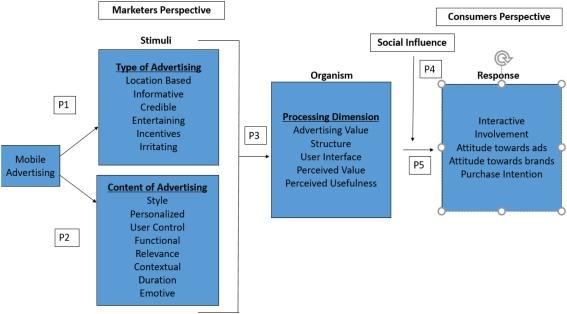10 Key Future Trends in Digital Learning Environments: What to Expect in Online Education
Online education is evolving rapidly, driven by advancements in technology and changes in learner expectations. Discover the most notable trends shaping the future of digital learning environments—and find out how you, as a learner or educator, can adapt and thrive in this innovative landscape.
Introduction
The digital revolution in education has transformed teaching and learning, making courses accessible, flexible, and engaging for millions around the globe. As eLearning platforms and virtual classrooms continue to advance,the future of online education is brimming wiht potential.Whether you’re a student, educator, or education technology professional, understanding key future trends in digital learning environments can help you make the most of new opportunities and stay ahead of the curve.
10 Key Future Trends in Digital Learning Environments
-
1. Artificial Intelligence (AI) and Adaptive Learning
AI-driven adaptive learning platforms are gaining traction in online education.By analyzing student performance and behavior, these systems personalize course content, assessments, and feedback, ensuring a tailored learning experience.AI in education enhances engagement, accelerates progress, and helps learners overcome challenges at their own pace.
- Automated grading and feedback
- Real-time learning analytics
- customized content recommendations
-
2.Immersive Technologies: Virtual Reality (VR) & Augmented Reality (AR)
The integration of VR and AR in education is transforming online learning spaces into interactive playgrounds. From virtual science labs to past simulations, immersive technologies provide experiential learning, making complex concepts easier to grasp.
- Virtual field trips
- Hands-on training simulations
- Collaborative 3D environments
-
3. Microlearning and Bite-Sized Lessons
Busy learners demand concise and focused content. Microlearning—which breaks topics into short, digestible modules—boosts retention and motivation. This trend is especially relevant for workforce training and mobile learning environments.
- Short videos
- Quizzes and flashcards
- Interactive infographics
-
4. Gamification and Game-Based Learning
Gamification applies game design elements to online education, driving engagement through rewards, challenges, and leaderboards.Game-based learning fosters critical thinking and collaboration, especially in STEM and language courses.
- Point-scoring systems
- badges for achievements
- Competitive social learning
-
5. Mobile Learning (mLearning)
With smartphones and tablets becoming ubiquitous, mobile learning platforms are essential for modern digital learning environments. Responsive design, dedicated apps, and offline access enable learners to study anytime, anywhere.
- On-the-go course access
- Push notifications and reminders
- Seamless integration with social platforms
-
6.Data-Driven personalization
Big data is powering new levels of personalization in eLearning.By mining insights from course metrics and student feedback,online learning platforms tailor recommendations and adapt pathways to fit individual goals.
- Customized learning journeys
- Predictive course suggestions
- Personalized coaching and mentoring
-
7. Social and Collaborative Learning
Virtual classrooms are increasingly embracing group projects, discussion forums, and peer-to-peer interactions. Collaborative online learning boosts engagement, supports diverse viewpoints, and helps build digital communities.
- Live video breakout rooms
- Group assignments and shared resources
- Peer assessment and feedback
-
8. blockchain Credentials and digital Badges
Blockchain technology is set to revolutionize how online education validates and records achievements. secure, shareable digital credentials and badges help students showcase their skills to employers and universities worldwide.
- Immutable digital transcripts
- Easy skills verification
- Portable, lifelong learning records
-
9. Inclusive and Accessible design
Digital learning environments must cater to users of all abilities. Future platforms are prioritizing accessibility in online education through adaptive UI, multilingual support, and assistive technologies like screen readers or subtitles.
- Universal design principles
- Captioned multimedia content
- Voice commands and navigation
-
10. Lifelong Learning and Skill-Based Credentials
The rapid pace of change in modern industries means lifelong learning is essential. Digital platforms are supporting continuous upskilling and reskilling with skill-focused online courses and flexible, stackable credentials.
- Micro-credentials and certificates
- Professional development tracks
- Industry partnerships and job placement
Benefits of Embracing Future Trends in Digital Learning
- Adaptability: Learn at your own pace on any device.
- Personalization: Courses adapt to your unique needs and goals.
- Engagement: Immersive and interactive content keeps learners motivated.
- Global Access: Connect with peers and resources worldwide.
- Verification: blockchain and digital badges provide verified academic records.
Practical Tips for Learners and Educators
- Stay informed about technology trends in online learning.
- Experiment with new digital learning tools, such as VR headsets or adaptive apps.
- Look for courses offering interactive elements and peer collaboration.
- Maintain a growth mindset—prioritize lifelong learning and frequent upskilling.
- Check for platforms with accessibility features suited to your needs.
Case study: How AI and Personalization are Redefining eLearning
Consider a leading online education provider using AI-powered analytics to track student progress. By monitoring quiz scores and participation, the system adjusts lesson difficulty and recommends study resources. Students report a substantial increase in effective learning time and confidence. Personalized notifications,feedback,and goal reminders keep motivation high,demonstrating how adaptive learning shapes student success.
“thanks to AI-driven feedback, I know exactly where I need to improve. My path through the course feels unique and customized,” says an online learner from California.
First-Hand Experience: The Power of Mobile Learning
Mobile learning apps empower students to engage with course content during commutes, breaks, or travel—no need to be tethered to a desk. For many, this flexibility has eliminated barriers to advancement and encouraged participation in professional development courses they otherwise might have missed.
“Studying on my phone during my lunch break has made all the difference in completing my certification,” shares a working professional from New York.
Conclusion
The future of online education is bright, diverse, and full of potential. As digital learning environments integrate cutting-edge technology, personalized pathways, immersive experiences, and inclusive design, the possibilities for learners and educators are boundless.Embrace these trends to unlock greater flexibility, deeper understanding, and lifelong growth in your educational journey.
Stay informed,explore new tools,and remain proactive in your pursuit of knowledge—because the next generation of digital learning is here,and you can be a part of it.

